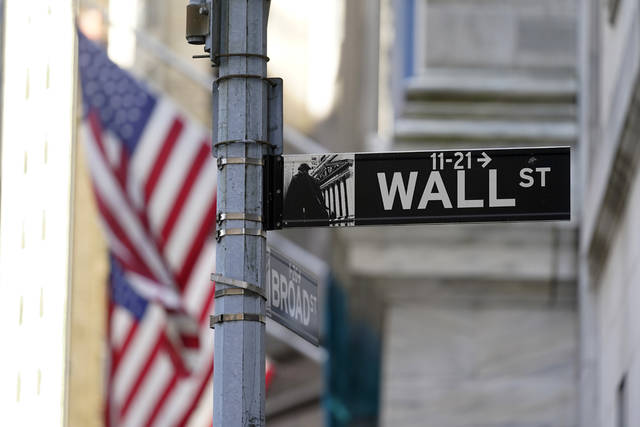
If you were invisible, the perfect industrial spy, you could lurk in a company’s headquarters and watch every dollar coming in and going out.
That would give you an excellent fix on the company’s cash flow. And cash flow, many investors believe, is a great measure of a company’s health.
For stock analysts, a key figure is “price to cash flow,” a stock’s price divided by the company’s cash flow per share. Being neither invisible nor omniscient, they need to estimate cash flow.
Here’s how it’s usually done: The analysts start with a company’s reported earnings (profits) per share and make a few adjustments. To the reported profits, they add depreciation and amortization charges, because those are accounting entries, not necessarily cash expenditures.
Then, they usually subtract the capital expenses that they judge are strictly necessary — replacement of aging machines, railcars, buildings and the like. The result is called “free cash flow.”
Now, they have — or hope they have — an accurate measure of the cash that is flowing in or out of the business in a given year.
16.6% return
Beginning in 1999, I’ve written 17 columns recommending stocks that look attractive based on price to cash flow. (This is the 18th.)
The average one-year return on my picks from this paradigm has been 16.6%. That compares with 10.3% for the Standard & Poor’s 500 Index over the same periods.
Ten of the 17 columns have beaten the index, and 12 have been profitable.
Bear in mind that my column results are hypothetical: They don’t reflect actual trades, trading costs or taxes. These results shouldn’t be confused with the performance of portfolios I manage for clients. Also, past performance doesn’t predict future results.
Last year, my picks achieved an 18.7% return, which normally would please me. However, the S&P 500 jumped 33.5% as the nation largely recovered from the covid-induced recession. My best gainer, MarineMax Inc. (HZO) climbed 48%. My worst loser, FutureFuel Corp. (FF), fell 29%.
Here are five stocks that look attractive to me now, based on the price-to-cash flow ratio.
Capital One
You may know Capital One financial Corp. (COF) from its TV ads, which ask, “What’s in your wallet?” It’s a banking company that tries to give its branch offices the homey feel of a cafe. The stock is inexpensive by several measures and sells for a little over six times free cash flow.
Capital One went public in 1994 and has shown a profit in each of the 27 years since then. Last year, it had a bad year; hence, the stock is cheap. But profits have improved lately.
Argan
Argan Inc. (AGX), out of Rockville, Md., specializes in designing and building power plants. The stock has hardly budged this year and is a little below where it was five years ago. But if my outlook is right (always a big if), the company should see a lively increase in sales and earnings soon.
Meanwhile, Argan shares languish at less than five times free cash flow. And the stock provides 2.2% in dividends, a decent yield. One unusual thing about Argan that I like is that the company is debt free.
MarineMax
I’m bringing back my best gainer from last year, MarineMax Inc. (HZO), which describes itself as the world’s largest recreational boat and yacht retailer. Despite a good gain in the past year, the stock still sells for less than three times free cash flow.
Many people don’t like the fact that the rich are getting richer. But if your business is selling boats and yachts, that’s not a bad thing.
Synchrony
Synchrony Financial (SYF) issues and administers private-label credit cards for Amazon.com, Lowe’s, American Eagle Outfitters, eBay and dozens of other companies. I think this stock is timely because, as countries haltingly recover from the pandemic, credit-card use probably will increase.
At the same time, credit-card defaults, the bane of card-issuing companies, are likely to decline. Synchrony shares, spun off from GE Capital in 2014, trade for a little more than four times cash flow.
Taylor Morrison
Based in Scottsdale, Ariz., Taylor Morrison Home Corp. (TMHC) was the nation’s seventh-largest home builder by revenue in 2019. I like the entire industry and own a couple of stocks in it, but not this one.
Nonetheless, Taylor Morrison is one of the cheapest plays as measured by price to cash flow, with a ratio of a little over five. It’s also cheap by other measures, selling at just under book value (corporate net worth per share).
Disclosure: I own Synchrony Financial personally and for almost all of my clients. I own MarineMax for a few clients.
John Dorfman is chairman of Dorfman Value Investments LLC in Newton Upper Falls, Mass., and a syndicated columnist. His firm or clients may own or trade securities discussed in this column. He can be reached via email.
"flow" - Google News
August 24, 2021 at 07:29AM
https://ift.tt/3sIVtos
John Dorfman: 5 stocks that look good based on cash flow - TribLIVE
"flow" - Google News
https://ift.tt/2Sw6Z5O
https://ift.tt/2zNW3tO
Bagikan Berita Ini














0 Response to "John Dorfman: 5 stocks that look good based on cash flow - TribLIVE"
Post a Comment